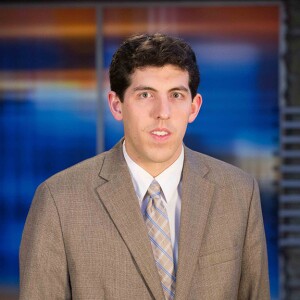HELENA — Next week, Helena city leaders will decide whether to support big changes to traffic flow and parking around the Montana State Capitol.
At a meeting Monday evening, the Helena City Commission will consider a new traffic plan for the Capitol Complex, proposed by the Montana Department of Administration. If they agree to go forward with it, the streets surrounding the Capitol could look very different in a few months.
“We just believe that our role is to create an environment that is basically safe for everyone, to encourage people to come to their capitol – whether it's as a tourist, a legislator, or to do business – and it's to get them here safely and effectively, no matter what their mode of transportation is and no matter what their mobility level is,” said Steve Baiamonte, administrator of DOA’s General Services Division. “We take that role very seriously, and we believe that this is really a good step in that direction.”

The proposed plan would convert several streets to one-way-only traffic, with angled parking spaces replacing parallel parking. 6th Avenue would be eastbound only from Montana Avenue to Roberts Street, 5th Avenue would be eastbound from Roberts to Sanders Street, and Lockey Avenue would be westbound from Sanders to the Capitol. In general, traffic would have to travel clockwise around the Capitol Complex.
An analysis from an engineering firm says the changes would officially increase the number of available parking spaces in the project areaa from 220 to 225. However, Baiamonte said they expect there will be a much bigger impact, because drivers often aren’t parking efficiently.
“If you look out the window right now, you can see that basically there's about 20 feet of space between a car out there, the next car has 15 feet of space between it – for about every fourth or fifth car, we're actually losing a space,” he said. “What we see during session is that people then try to maximize those spaces – and then we have a lot of hit-and-runs and a lot of fender-benders because someone's trying to squeeze in, and they're trying to back into a space while there's four more cars lined up behind them.”

Baiamonte said angled parking generally slows traffic down and makes it easier for drivers to find spots and pull in and out. In addition, removing parking on the opposite side of the street will allow them to add bike lanes on 6th and Lockey.
Overall, Baiamonte said the goal is to create more of a “campus feel” around the Capitol Complex.
“It would be a more natural feel, and people will just naturally slow down – and then tourists will feel more welcome to actually stop and come into their capitol,” he said.
Baiamonte said DOA has been in discussions with the city about the possible changes for about two years. He said the changes wouldn’t require any reengineering or construction – just repainting and new signage. Overall, he estimated the work would cost less than $25,000 and could be completed within two months, and he said DOA would share costs with the city and do some of the work.
Baiamonte said they have had no discussions about changing the allowed time for parking or making drivers pay to park.

DOA wants to implement the new traffic plan before the Montana Heritage Center opens to visitors.
“We don't know what traffic will look like in terms of how many people will be coming and going from there, but if we can start influencing traffic patterns now, then we can have more influence on that,” he said. “Once the museum opens, once the museum has been open for a while, then the appropriate thing to do is to start collecting data over a year or two and then make appropriate changes to it. But it's much easier to do that if we've already made the major influences to traffic.”
The city commission will meet Monday at 6 p.m., at the City-County Building. City leaders have said they’re hoping to hear more about public reaction to the proposal. Baiamonte said DOA has been taking public comment for several weeks, and they recently held an open house.
“Generally, most of the questions that we're getting are actually about bigger issues,” he said. “So while they may not have a concern about this, their question is ‘How does it impact the rest of us?’ or ‘Why can't we get more connectivity or more bike lanes?’ ‘How do we make the rest of the city safer?’ Our answer to that is that we can only control, of course, what happens on Capitol Square. We're hoping this can be a catalyst, and we're happy to work with the city.”




